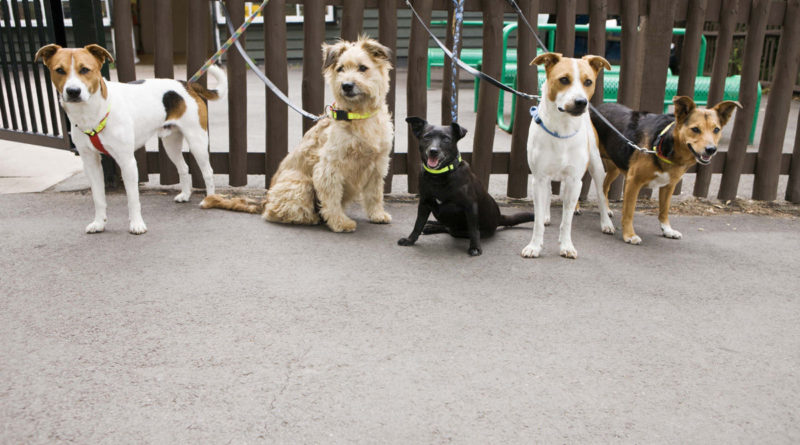Keep your pets safe, healthy during summer
In just a few weeks summer will be in full bloom, kids will be out of school and local family-friendly outdoor events will be in full swing. Spending time outdoors with family is tradition for Central Texas residents, and many like to include their canine companions in the festivities.
James Hamm, president of the International Association of Canine Professionals and owner of Lone Star Dog Trainer in Copperas Cove, said pet owners need to be aware of the potential heat injuries a pet can sustain in Texas.
“Unless your dog is acclimated to being outside for long periods of time, is overweight or ill, it’s not a good idea to take them,” Hamm said. “They are more susceptible to heat stroke.”
“Don’t take your pets out for a walk when it’s 100 degrees, or if it’s 76 degrees and humid,” added Dr. Robert Murry of Aztec Pet Hospital and Veterinarian Clinic in Harker Heights. “Dogs cannot cool down like we do, especially if your pet has a short muzzle.”
According to Pet MD, “dogs with a short muzzle may suffer from brachycephalic airway syndrome, which is the medical term related to various upper airway problems found in short-nosed, flat-faced dog breeds such as Pekingese, pug, bulldog, boxer, Chihuahua and Shih Tzu.”
Hamm said to watch for signs of heat injury in your pets when out at a park, lake, beach or camping. One of the first signs is that the dog will appear sluggish, tired and lay down. The second sign is the animal will stop moving and appear unclear. If the dog drops, Hamm said they are in heat stroke and this is a medical emergency.
“Begin treatment immediately. Your pet will have an 80 percent chance of survival,” said Hamm, adding that a 30-minute ride to a veterinarian clinic could cost your pet precious time.
Hamm said if outdoors, get your pet in shade immediately, or get it indoors in an air-conditioned environment. Cool your pet as quickly as possible by immersing it in water and ice. Place cool towels on its head and torso. Rub alcohol into the fur on its torso, not the face, and check the temperature using a standard thermometer.
A dog’s temperature should be between 99.5 and 102.3 degrees Fahrenheit. Anything above 103 is a danger zone for dogs. Make sure your pet has plenty of hydration before you take it with you to an outdoor event, beach, or camping trip.
“Also, don’t take your pets on a marathon run because you don’t know their ability on distance,” Murry said. “If you see your dog limping, it’s time to stop.”
Another precaution Murry said pet owners can take to keep their animals comfortable is Pad Guard. “This is a salve you spread on your pets’ feet that gives them protection from hot pavement,” Murry said.
Keeping your pet in control at outdoor events is also crucial for the pets’ safety, especially with all of the leash laws in place in local communities. Hamm said when you are out with your pet to use a lead 4-6 feet in length. Don’t use a retractable leash because they are unsafe. Use a flat or training collar that won’t come undone. Although Hamm trains dogs with the off-leash method, he said “on-leash manners are spectacular on a dog that is off-leash trained.”
Some leads include the traditional collar and leash, a halter and leash or a Halti lead.
Susan Belltran, vet tech at Aztec Animal Hospital and Clinic, said she used a Halti lead for her rottweiler. “The Halti lead goes around the muzzle and provides a painless, gentle control for dogs,” she said.
Murry said if you plan to have your pets outside and around other dogs, it’s imperative to have current vaccines. In addition to their annual rabies, they should also have bortadella, parvo and canine influenza. “There have been reported cases of canine flu in Texas,” Belltran said.
“It’s implied. Don’t come to me unless they are vaccinated,” added Hamm. “Texas is the parvo capital of America. Wherever you congregate, dog parks, events—dogs are susceptible to the disease.”
Before you take off for that weekend trip or day excursion, make sure your pet is ready for the drive experience. If you have a new pet, or a pet that is not used to riding in a car, Murry said, “Take your pet out for short rides and have it end with a positive experience.”
“Do it every day and end it with a treat or a big hug, whichever reward works,” he added.
Never leave your pets in a locked car with the windows rolled up during the summer heat and never let your pet ride in the back of a truck. When traveling with pets in the back seat of your car, keep your windows up because dogs have been known to jump out.
And keep your pet secure, either with a seat belt harness or in a crate. Hamm, who has four dogs himself, two large and two small, said he uses Ruff Tough Kennels to transport his animals. “These are plastic travel kennels that can be bolted down,” Hamm said.
When traveling with your pets this summer, Hamm said, “Common sense prevails in all cases. If you’re not sure, don’t bring your pet.
“Always err on the side of caution,” Hamm added. “Not on the side of risk.”



